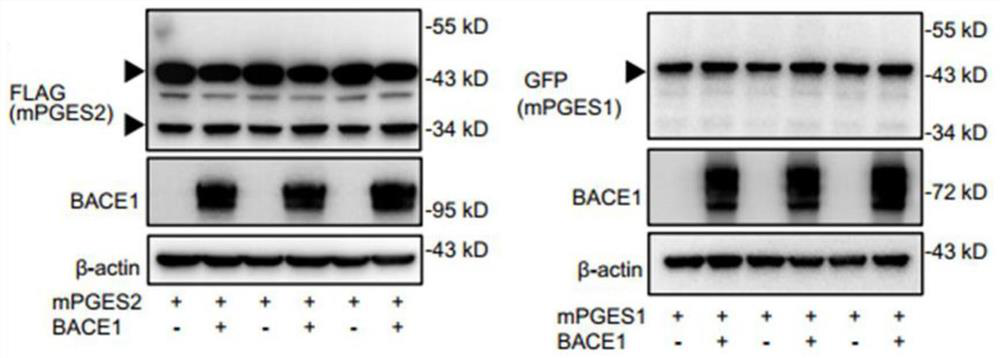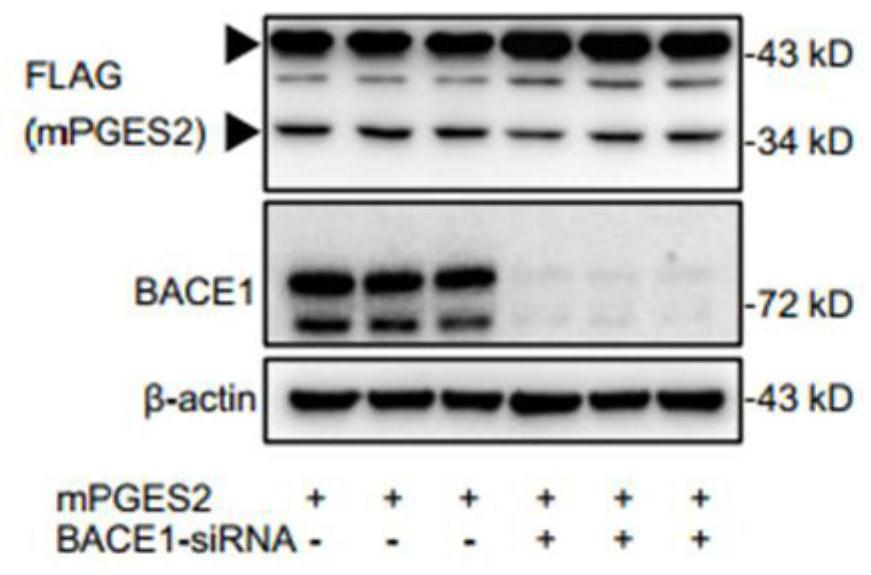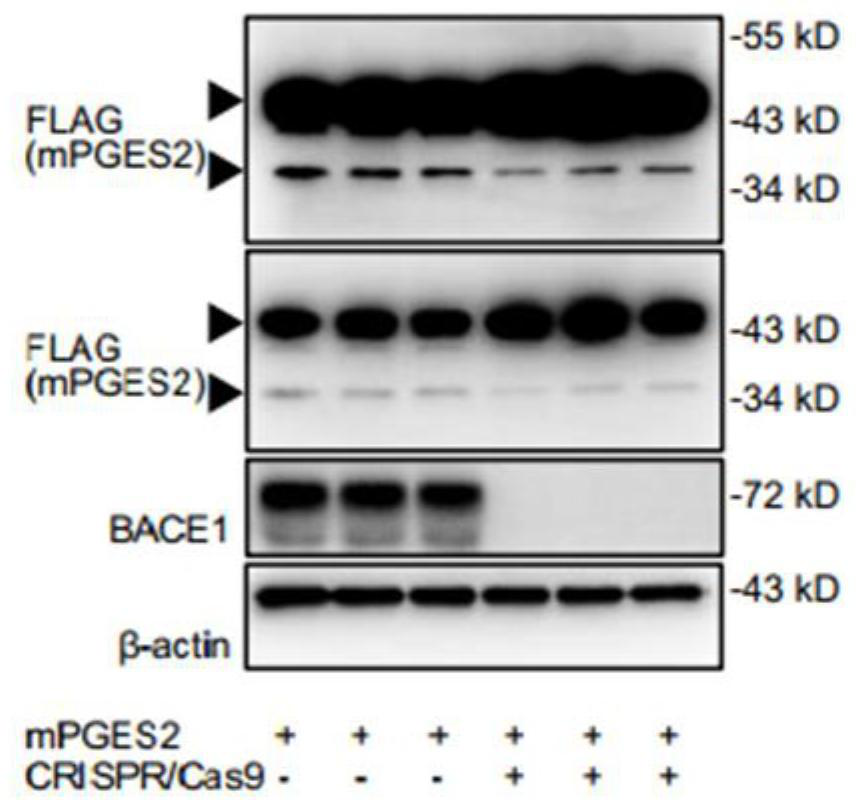Application of CD4+T cell-derived BACE1, EP2 and EP4 as Alzheimer disease treatment target
A technology for Alzheimer's disease, cells, applied in the field of biomedicine
- Summary
- Abstract
- Description
- Claims
- Application Information
AI Technical Summary
Problems solved by technology
Method used
Image
Examples
Embodiment 1
[0079] Example 1 BACE1 specifically cleaves the precursor form of mPGES2
[0080] 1. Experimental process
[0081] In order to confirm the relationship between BACE1 and mPGES2, the present invention constructs HEK293 cells stably transfected with HA-BACE1 and Flag-mPGES2 plasmids, and detects the precursor form of mPGES2 (molecular weight is 43kDa) by Western blotting (Western blot) technique and mature form (molecular weight of 34kDa) (attached figure 1 ). At the same time, in order to confirm that the regulation of BACE1 on mPGES2 is specific, we also constructed another prostaglandin synthase mPGES1 (GFP-mPGES1 plasmid) and HEK293 cells stably expressing the BACE1 plasmid, and also carried out Western blot detection (attached figure 1 ). On the other hand, the present invention utilizes siRNA and CRISPR-Cas9 technology to construct stable BACE1 knockdown (knockdown) and knockout (KO, knockout) cell lines, transfect Flag-mPGES2 plasmid in this cell line, use Western blot...
Embodiment 2
[0113] Example 2 CD4 + T cell-derived BACE1 also cleaves the mPGES2 precursor form, thereby regulating the PGE2 signaling pathway
[0114] 1. Experimental process
[0115] To explore CD4 + Whether T cell-derived BACE 1 (under different physiological conditions or in different cells, BACE1 may have different selectivity for substrate cleavage) can also cleavage the precursor form of mPGES2, the present invention utilizes BACE1 knockout Mice BACE 1 - / - Mice and BACE1 overexpressing mice are HUBC mice. Through magnetic bead sorting technology, the present invention will BACE 1 - / - CD4 of mice and HUBC mice + T cells were isolated, and the expression of BACE1 was detected by Western blot (attached Figure 4 And attached Figure 5 ). Experiments of the present invention confirm that CD4 + T cell-derived BACE1 can cleave the precursor form of mPGES2, and BIV, an inhibitor of BACE1, can significantly inhibit this cleaving (attached Image 6 ). Further experiments of the pr...
Embodiment 3
[0168] Example 3 BACE1 regulates CD4 through PGE2 + T cell TCR pathway activation
[0169] 1. Experimental process
[0170] To explore whether BACE1 regulates CD4 + T function, the present invention confirms that PGE2 can promote CD4 + Activation of the TCR pathway and its downstream pathways in T cells (attached Figure 14 ), and knockdown of BACE1 can significantly inhibit CD4 + Activation of the TCR pathway in T cells (attached Figure 15 ), on the contrary, overexpression of BACE1 can promote CD4 + Activation of the TCR pathway in T cells (attached Figure 16 ).
[0171] 2. Experimental materials
[0172] BACE 1 - / - Mice were purchased from Jackson Laboratories; HUBC mice were commissioned to construct by Tongji University; cell sorting reagent Anti-PE beads (130-048-801, Miltenyi Biotec); Ultra-LEAF TM Purified anti-mouse CD28(102115) and Ultra-LEAF TM Purified anti-mouse CD3 (100340) was purchased from Bioledgend; 20× phosphate buffered saline (20×PBS, the ...
PUM
 Login to View More
Login to View More Abstract
Description
Claims
Application Information
 Login to View More
Login to View More - R&D
- Intellectual Property
- Life Sciences
- Materials
- Tech Scout
- Unparalleled Data Quality
- Higher Quality Content
- 60% Fewer Hallucinations
Browse by: Latest US Patents, China's latest patents, Technical Efficacy Thesaurus, Application Domain, Technology Topic, Popular Technical Reports.
© 2025 PatSnap. All rights reserved.Legal|Privacy policy|Modern Slavery Act Transparency Statement|Sitemap|About US| Contact US: help@patsnap.com



